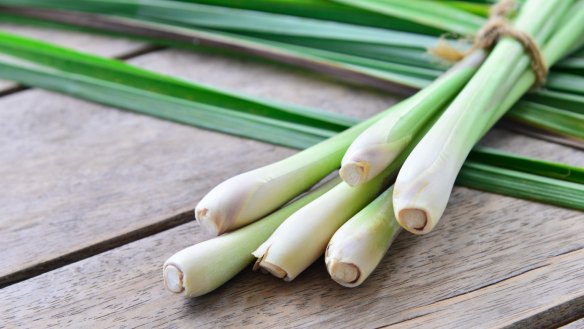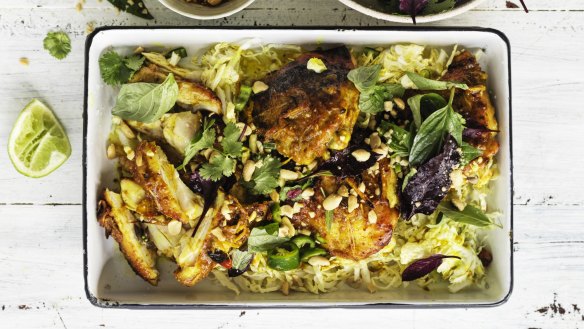Lemongrass: Everything you need to know

What is it?
Lemon-scented grasses are found around the world, including Africa, the Middle East, south-east Asia and Australasia. They come from a genus called Cymbopogon. The lemongrass primarily used in cooking is called C. citratus, which native to Malaysia, Thailand, the Philippines and parts of Indonesia. It can grow to two metres, with dry outer leaves protecting tough green leaves that guard the soft, white, immature leaves surrounding the stem. The white and pink hued heart of the young stalks is used to make curry pastes and other dishes, while the outer leaves are excellent for infusions.
Why do we love it?
It is a cheap and widely available herb that brings a complex, multilayered tropical citrus note to sweet and savoury dishes. Outside the kitchen, it is used in many cultures to treat stomach aches, muscle pain and fever, and one of its compounds is extracted to make citronella oil, a mosquito repellent.

Who uses it?
Roonie Saisombat, who grew up in Chanthaburi in eastern Thailand, is chef and co-owner of Lek Lek Ban, a caterer and condiment producer in Mornington, south of Melbourne. "Our family home was surrounded by lemongrass," she remembers. "It kept away the insects and had a beautiful aroma. We would eat it four or five times a day. It would be in the tom yum soup at breakfast, in the curry paste for the main meal, and we would cook it with rice or sago with some sugar for dessert. For Thais it is savoury, sweet and medicine." Sydney tea maker Arthur Tong founded his business, Tea Craft, in Lidcombe with homeopath Tjok Kerthyasa. "Lemongrass has long been used to treat many ailments and has natural anti-inflammatory agents and antioxidants. I use it in a tea called Heal along with ginger, calendula, fennel and peppermint." Tong says lemongrass should be dried before it is made into a tea and, because the leaves are so hard, they need to be steeped well to allow them to soften and release their aromatic and beneficial compounds.
How do you use it?
Peel away the hard, green outer leaves. These can be fresh or chopped then dried for lemongrass tea, made by adding a tablespoon of chopped lemongrass to a large teacup, perhaps with some sliced ginger, covering with boiling water and allowing to steep for five minutes. To use lemongrass in cooking, trim off the hard root end of the stalk and crush the white inner stems with the flat blade of a knife to release the aromas. When making a Thai curry paste from scratch, the more tender the lemongrass you use in the paste, the smoother the curry sauce. Lemongrass can flavour a whole fish when stalks are placed inside, perhaps with some slices of ginger, and cooked in a bamboo steamer. Use lemongrass stems as skewers, threading on marinated chicken before grilling. Add a tropical flavour to corn and coconut soup or try a fragrant mussel broth flavoured with lemongrass, ginger and galangal. Finish a meal with fresh fruit steeped in a lemongrass-scented syrup. .
Where do you get it?
Look for fresh, dense lemongrass with bright green outer leaves and plump stem in markets, greengrocers and supermarkets. Older lemongrass won't be as fragrant, the outer leaves will have yellowed and it will have lost moisture. Wrap fresh lemongrass in a damp cloth or paper towels and store in the fridge. Or stand the stalks in a jar of water, where it sprout roots, making it easy to grow a clump of your own.
Suggest an ingredient via email to brainfood@richardcornish.com.au or tweet to @foodcornish
Appears in these collections
More:
From our partners
Original URL: https://www.smh.com.au/goodfood/lemongrass-everything-you-need-to-know-20211110-h1zp9x.html
